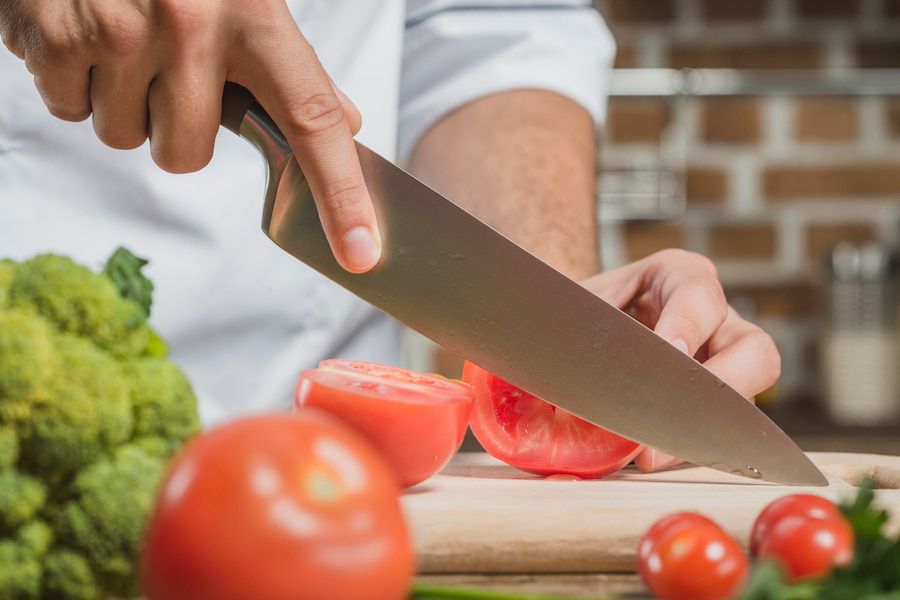In the world of cooking, accidents are inevitable, and one of the most common mishaps is getting a knife cut on your thumb. Knowing how to heal knife cut on thumb quickly and safely is essential, especially if youre a kitchen professional or a home cook. Whether its a minor nick or something deeper, prompt and proper care ensures faster healing and prevents infection.
In this detailed guide, we will explore everything you need to know about treating a knife cut, step-by-step, and highlight preventive measures to avoid injuries in the future.

What Causes Knife Cuts on the Thumb?
Knife accidents usually happen due to the following reasons:
- Poor grip on the knife.
- Improper cutting technique.
- Using a dull blade.
- Distractions in the kitchen.
- Slippery cutting surfaces or mishandling the knife.
It happens to even the most experienced chefs, but with proper knowledge about handling and healing wounds, you can continue working safely.
Immediate Steps to Take After a Knife Cut
When you accidentally cut yourself, a proactive response is key. Heres the immediate first aid process:
Step 1: Stay Calm
Panic only worsens the situation. Take a deep breath, and focus on addressing the cut.
Step 2: Clean the Wound
Wash your hands thoroughly with soap and water. Rinse the wound under clean running water for a few minutes to remove dirt and debris. Avoid alcohol or hydrogen peroxide as they can damage tissue. If debris is lodged deep, its best to consult a doctor.
Step 3: Stop the Bleeding
Apply gentle pressure to the cut using a clean, sterile cloth or gauze for several minutes. Elevate your thumb to help slow bleeding.
Step 4: Disinfect and Cover
Once the bleeding stops, apply an over-the-counter antiseptic or antibiotic ointment. Cover the wound with a clean bandage to protect it from dust and bacteria.
How to Tell if the Cut Is Minor or Serious
Not every knife cut needs stitches, but its important to identify when medical attention is required. If the cut:
- Is deeper than 1/4 inch.
- Does not stop bleeding after 10 minutes of pressure.
- Causes numbness or exposes bone.
- Looks inflamed, red, or pus-filled after a few days.
Visit a healthcare facility immediately in these cases.
The Best Way to Heal a Knife Cut on Your Thumb
Properly Bandage the Wound
Keep the wound moist using antibiotic ointments, and re-bandage it daily. Replace wet or dirty bandages promptly.
Avoid Using the Affected Thumb
Minimize activities that strain or reopen the cut. Resting the injury speeds up the healing process.
Maintain Cleanliness
Wash the area gently during bandage changes, and avoid soaking it in water for long periods.
Eat Wound-Healing Foods
Consume foods rich in Vitamin C, zinc, and protein to assist the body in tissue repair.
Common Mistakes to Avoid
Avoid these pitfalls when treating a knife cut:
- Skipping the cleaning process.
- Using unclean materials to bandage the wound.
- Ignoring signs of infection.
Preventing Knife Cuts in the Kitchen
Use a Reliable Knife
Invest in high-quality knives for better control compared to dull or low-quality blades. Learn knife techniques for safer operations.
Adopt Proper Cutting Techniques
Always curl your fingers toward your palm while chopping. Learn other methods here.
Keep Your Workspace Organized
An organized environment reduces kitchen accidents.

FAQs
1. How long does it take to heal a knife cut on the thumb?
A minor cut may heal within a week, while deeper injuries could take several weeks, depending on care and individual recovery.
2. Can I use home remedies like honey?
Yes, honey has antimicrobial properties. However, consult with a healthcare provider for serious injuries.
3. Should I remove a bandage during bathing?
Keep the cut protected during baths or opt for waterproof covering.
Recommended External Resource
Learn more about proper cutting techniques in this in-depth guide: Knife Skills.
Conclusion
Knowing how to heal knife cut on thumb ensures kitchen safety and quick recovery. By following these steps and implementing preventive measures, you can minimize risks and become a more confident cook in the kitchen.
This article contains affiliate links. We may earn a commission at no extra cost to you.


